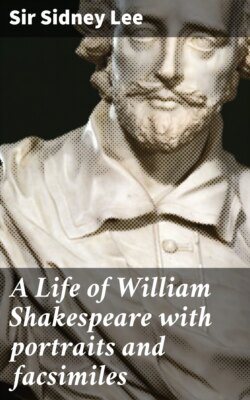Читать книгу A Life of William Shakespeare with portraits and facsimiles - Sir Sidney Lee - Страница 10
На сайте Литреса книга снята с продажи.
The poet’s mother.
ОглавлениеTable of Contents
With characteristic shrewdness he chose a wife of assured fortune—Mary, youngest daughter of Robert Arden, a wealthy farmer of Wilmcote in the parish of Aston Cantlowe, near Stratford. The Arden family in its chief branch, which was settled at Parkhall, Warwickshire, ranked with the most influential of the county. Robert Arden, a progenitor of that branch, was sheriff of Warwickshire and Leicestershire in 1438 (16 Hen. VI), and this sheriff’s direct descendant, Edward Arden, who was himself high sheriff of Warwickshire in 1575, was executed in 1583 for alleged complicity in a Roman Catholic plot against the life of Queen Elizabeth. [6] John Shakespeare’s wife belonged to a humbler branch of the family, and there is no trustworthy evidence to determine the exact degree of kinship between the two branches. Her grandfather, Thomas Arden, purchased in 1501 an estate at Snitterfield, which passed, with other property, to her father Robert; John Shakespeare’s father, Richard, was one of this Robert Arden’s Snitterfield tenants. By his first wife, whose name is not known, Robert Arden had seven daughters, of whom all but two married; John Shakespeare’s wife seems to have been the youngest. Robert Arden’s second wife, Agnes or Anne, widow of John Hill (d. 1545), a substantial farmer of Bearley, survived him; but by her he had no issue. When he died at the end of 1556, he owned a farmhouse at Wilmcote and many acres, besides some hundred acres at Snitterfield, with two farmhouses which he let out to tenants. The post-mortem inventory of his goods, which was made on December 9, 1556, shows that he had lived in comfort; his house was adorned by as many as eleven ‘painted cloths,’ which then did duty for tapestries among the middle class. The exordium of his will, which was drawn up on November 24, 1556, and proved on December 16 following, indicates that he was an observant Catholic. For his two youngest daughters, Alice and Mary, he showed especial affection by nominating them his executors. Mary received not only £6 13s. 4d. in money, but the fee-simple of Asbies, his chief property at Wilmcote, consisting of a house with some fifty acres of land. She also acquired, under an earlier settlement, an interest in two messuages at Snitterfield. [7] But, although she was well provided with worldly goods, she was apparently without education; several extant documents bear her mark, and there is no proof that she could sign her name.
